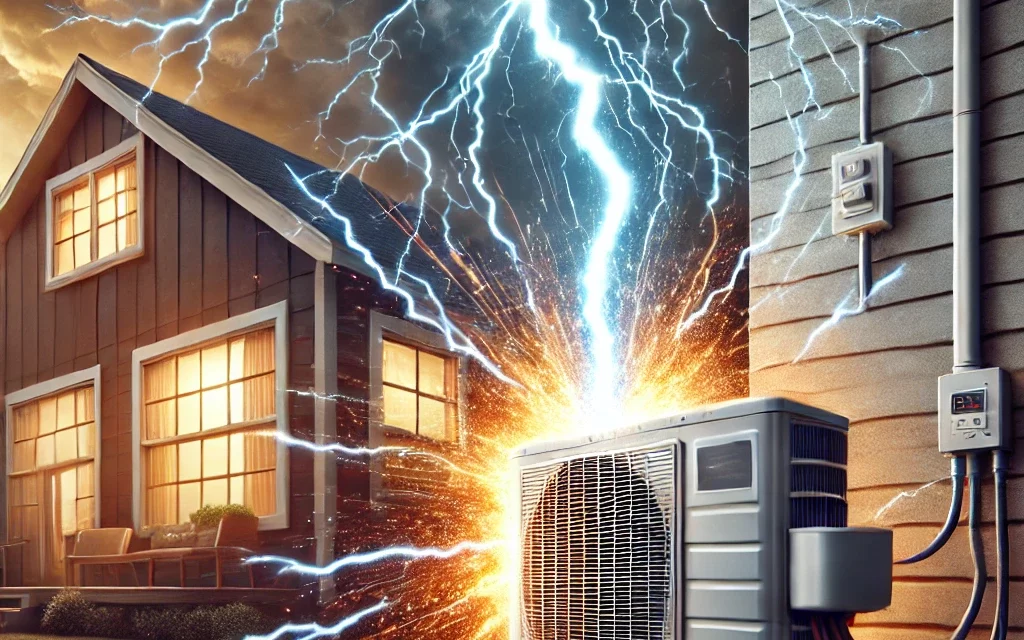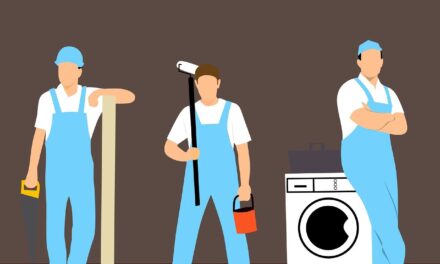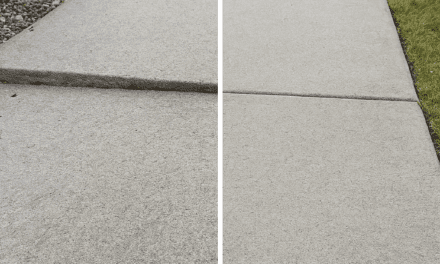Last updated on December 8th, 2025 at 08:59 am
If you live in an area prone to lightning strikes, power outages, or power spikes, consider a simple device that can save expensive electronics. A whole-house surge protector. I have spoken to many people who do not have any idea that such a device exists. What brought this to my attention was the fact that where I live, there are periodic storms that include lightning although no strikes have been on my house. I have replaced the capacitor on my air conditioner twice due to lightening in the air.
In addition to replacing air conditioning capacitors at my home, my rental properties have suffered similar problems. Consider calling an AC repair person out on a Saturday night. Not only have the AC capacitors been fried, but my TV shuts down and I need to restart it. What happens if your area is hit by a hurricane or tornado? A power spike could damage your electrical items.
Power comes back on but an electrical or electronic item may not
When we have had power outages which is very rare, all electrical items come back on at the same time causing power spikes in the house as the AC units spool up and the washing machine, dishwasher, and other appliances come back on.
Those surge protectors you buy for your smaller electronics will not help your larger appliances such as microwave ovens, stoves, refrigerators, washers, dryers, air conditioners, heaters, and more.
The whole house surge protector will cover all items connected to electricity in your house. Did you know that products that are plugged in and are not turned on can suffer from a surge or lightning strike?
A whole house surge protector is designed to protect your home’s electrical system and all connected devices from power surges, which are sudden spikes in voltage. These surges can come from external sources like lightning strikes, utility grid switching, or internal sources such as large appliances cycling on and off.
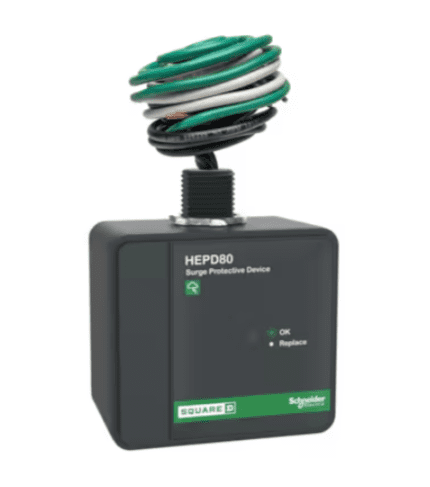
Here’s how a whole-house surge protector works:
- Installation at the Electrical Panel: The surge protector is installed at your home’s main electrical panel or breaker box, where it can monitor and control the flow of electricity entering your home. It acts as a gatekeeper, catching surges at the entry point before they can damage sensitive electronics.
- Diverting Excess Voltage: When a surge occurs, the device detects the increased voltage and quickly redirects the excess energy to the ground, preventing it from passing into your home’s wiring system. The ground wire safely dissipates this energy without causing harm.
- Metal Oxide Varistor (MOV): The heart of many surge protectors is a component called a Metal Oxide Varistor (MOV). This device changes its electrical resistance in response to voltage changes. In normal conditions, the MOV allows electricity to flow through the system uninterrupted. When a surge occurs, the MOV switches to a low-resistance state, diverting the excess current to the ground.
- Response Speed: Whole house surge protectors act within nanoseconds to prevent any damaging voltage from getting through to your electronics and appliances. They continuously monitor the voltage and engage when they detect a surge.
- Protection Levels: These protectors are rated in terms of joules (energy they can absorb) and clamping voltage (the point at which they begin to divert excess electricity). The higher the rating, the more powerful the protection.
Installing a whole house surge protector, provides an added layer of defense for your home’s electrical system, reducing the risk of damage to your appliances, electronics, and wiring from unpredictable power surges.
The following are the benefits of installing a whole house surge protector in your home:
A whole house surge protector offers several key benefits that help safeguard your home’s electrical system and connected devices. Here are the main advantages:
1. Protection for All Devices
- Comprehensive Coverage: It protects all electrical appliances and electronics connected to the electrical system. This includes not just high-end gadgets like computers and TVs but also essential systems like HVAC units, kitchen appliances, and even lighting systems.
- Solar Panels: Your solar system can be affected as well. Lightening can strike the panels and travel to your surge protector.
- Increased Device Lifespan: By protecting from sudden voltage spikes, you reduce wear and tear on sensitive electronics, helping them last longer.
2. Guard Against External Surges
- Lightning Strikes: A whole house surge protector shields your home’s electrical system from surges caused by lightning strikes. Even if the strike doesn’t hit directly, nearby strikes can cause voltage spikes.
- Utility Grid Surges: Power grid fluctuations, especially during utility switching or power outages, can cause surges. A surge protector mitigates these risks.
3. Internal Surge Protection
- Appliance Surges: Large appliances like refrigerators, air conditioners, and washers can create surges when they cycle on and off. A whole house surge protector helps to balance these internal surges and protect other devices from them.
4. Cost Savings
- Prevention of Expensive Repairs: A surge can fry your home’s expensive appliances, heating/cooling systems, or electronics. A whole house surge protector helps you avoid costly replacements or repairs.
- Reduced Insurance Claims: Many insurance companies offer lower premiums or incentives for homes equipped with whole house surge protectors, as they lower the risk of claims related to electrical damage.
5. Peace of Mind
- Consistent Protection: You don’t have to worry about plugging in individual surge protectors for each device. A single installation protects the whole-house.
- Minimal Maintenance: Once installed, a whole house surge protector requires little to no maintenance and works automatically, giving you protection around the clock.
6. Protection for Hardwired Systems
- Whole Home Protection: Devices like your HVAC system, home security systems, and lighting circuits, which can’t be plugged into typical surge protectors, are shielded from power surges when you use a whole house system.
7. Safeguard Against Small Surges
- Prevent Incremental Damage: Small, frequent surges can degrade the performance and lifespan of your electronics over time. Whole house surge protectors prevent this gradual damage.
8. Increased Property Value
- Desirable Feature for Buyers: Installing a whole house surge protector can be an attractive feature for potential homebuyers who prioritize safety and durability in their home’s electrical system.
9. Compliance with Electrical Standards
- Meet Modern Building Codes: Many newer homes or remodels require whole house surge protection as part of modern electrical codes, which means installing one can keep your home up to standard.
By installing a whole house surge protector, you safeguard both your home’s infrastructure and your valuable electronics, potentially saving significant money and frustration in the long run.

A whole house surge protector should be installed by a licensed electrician. Here’s why:
1. Safety
- High-Voltage Work: Installing a whole house surge protector involves working directly with your home’s main electrical panel, which is connected to live, high-voltage circuits. A licensed electrician is trained to handle this safely.
- Proper Grounding: For a surge protector to function correctly, it must be grounded properly. Incorrect installation or poor grounding could render the protector ineffective and increase the risk of electrical shocks or fire.
2. Compliance with Electrical Codes
- Code Adherence: Electricians are familiar with local building and electrical codes. They will ensure that the installation is compliant, reducing the risk of inspection issues or violations that could result in fines or insurance problems.
- Permits and Inspections: Depending on where you live, installing a surge protector may require permits or an inspection by a code enforcement officer. Electricians can handle the paperwork and ensure everything is up to code.
3. Experience and Knowledge
- Correct Installation: Electricians have the technical expertise to install the surge protector correctly and ensure it integrates well with your existing electrical system. This includes identifying the right type of surge protector for your home’s specific needs.
- Troubleshooting: If there are any issues during installation or if your electrical panel needs upgrades (such as an outdated circuit breaker), a licensed electrician can address those problems immediately.
4. Warranty and Insurance
- Maintaining Warranties: Many surge protectors come with warranties, but improper installation by a non-professional can void these warranties. Using a licensed electrician ensures your warranties remain valid.
- Insurance Considerations: Licensed electricians are typically insured.
5. Professional Recommendations
- Customized Solutions: Electricians can recommend the best type of surge protector for your specific home setup, including features like capacity (joule rating), grounding requirements, and integration with other protection devices like circuit breakers or backup generators.
6. Testing and Verification
- Ensuring Functionality: After installation, a licensed electrician can test the surge protector to verify that it’s working correctly and that the protection extends to all necessary circuits in your home.
In summary, hiring a licensed electrician ensures a safe, code-compliant installation, protecting your home and devices while maintaining warranties and potentially saving you from expensive repairs in the future.
It may take an electrician up to two hours to install the surge protector. If you want a soft start unit installed on your air conditioners it will take a bit longer. The soft start is not a surge protector, it comes in after the power is restored and permits larger power draw units such as air conditioners to restart with less stress.

A soft start device and a whole house surge protector
are two different types of electrical protection equipment, though both play roles in safeguarding your home’s electrical system. Here’s how they differ:
1. Whole-House Surge Protector
- Purpose: Protects your home from sudden voltage spikes (surges) that can damage electronics and appliances. These surges can come from lightning strikes, power outages, or internal electrical issues when large appliances turn on.
- Function: When a surge occurs, the surge protector diverts excess voltage to the ground, protecting your electrical devices.
- Installation: Installed at the electrical panel to protect the entire house.
2. Soft Start Device
- Purpose: Reduces the inrush of current when large appliances (such as air conditioners, refrigerators, or motors) start up. This lowers the mechanical and electrical stress on the system, potentially extending the life of the appliance and preventing sudden voltage drops.
- Function: A soft start gradually increases the current to the device, instead of allowing a sudden surge of electricity when the appliance starts. This smooth, slow startup can prevent tripped breakers or wear on the appliance’s motor.
- Installation: Typically installed on individual appliances, especially ones with large motors (like HVAC units or compressors).
Key Differences
- Surge Protector: Focuses on blocking or redirecting excess voltage caused by external surges.
- Soft Start: Focuses on reducing the electrical load caused by the startup of large appliances, making them start more smoothly.
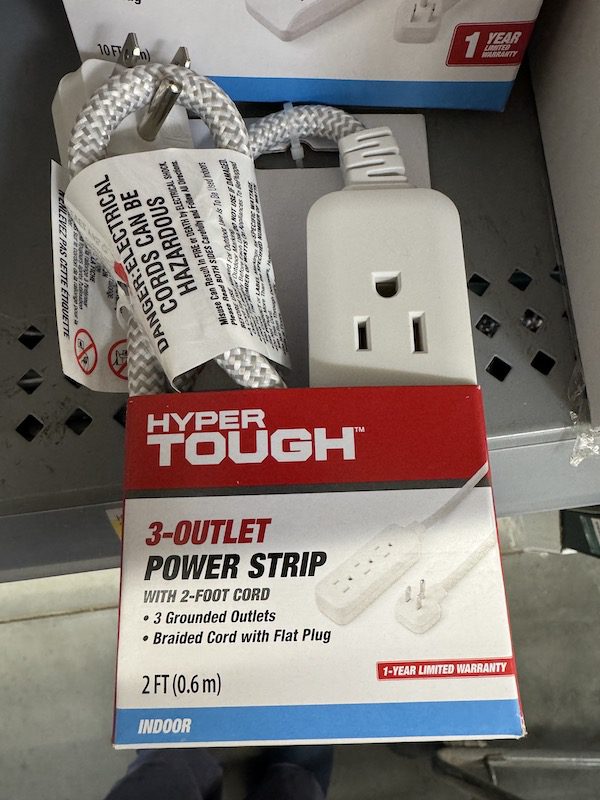

Do You Need Both?
While a whole-house surge protector protects your entire home from external voltage spikes, a soft start device helps protect large appliances from internal strain when they power on. A whole-house surge protector and soft start can be used in tandem. A whole-house surge protector does not serve the same purpose as a soft start device, and vice versa.
If you have appliances that tend to cause power fluctuations when they start up, a soft start may be a good complement to the surge protector for those devices.
Devices that can benefit from a whole house surge protector
Here’s a list of 20 electronic devices that would benefit from a whole house surge protector in the event of a power fluctuation:
- Refrigerator – Protects the compressor and electronic controls.
- HVAC System (Heating, Ventilation, and Air Conditioning) – Safeguards expensive components like the blower motor, furnace, and thermostats.
- Television – Prevents damage to sensitive circuitry in modern flat-screen TVs.
- Home Theater System – Protects amplifiers, speakers, receivers, and subwoofers.
- Computer – Ensures the CPU, hard drive, and other internal components are safe from surges.
- Wi-Fi Router/Modem – Protects against damage that could disrupt your internet connection.
- Washing Machine – Protects the motor and electronic control boards.
- Dryer – Safeguards electrical components and heating elements.
- Dishwasher – Protects the motor and digital control panels.
- Microwave Oven – Keeps internal circuitry and control boards safe.
- Electric Oven/Stove – Protects electronic displays and heating elements.
- Smart Home Devices (Thermostats, Cameras, etc.) – Protects sensitive smart home systems like cameras, doorbells, and lighting controllers.
- Gaming Consoles – Shields systems like PlayStation, Xbox, or Nintendo Switch from surge damage.
- Home Office Equipment (Printers, Scanners) – Prevents malfunction in essential office devices.
- Security System (Cameras, Alarms) – Protects your home’s security and surveillance equipment.
- Garage Door Opener – Safeguards the motor and remote control systems.
- Water Heater (Electric) – Protects against damage to heating elements and control systems.
- Smart Refrigerators – Newer models with displays and internet connectivity are vulnerable to surges.
- Medical Equipment (CPAP machines, oxygen generators) – Critical medical devices that rely on stable power.
- Electric Vehicle (EV) Charger – Protects the charging system and the vehicle’s battery from power surges
Help avoid power fluctuations
By protecting these devices, a whole house surge protector can help avoid expensive repairs or replacements due to power surges and fluctuations.
If you install a whole house surge protector, don’t throw out those smaller surge suppressors. Continue to use them, adding an additional layer of protection. Two separate power surges killed the circuit board on my treadmill because I failed to install a surge protector.
I bought plug-in surge protectors and used one on my treadmill. Since then, I have never lost a control board again. Standard power strips are a good back-up to the whole-house system.
A whole house surge protector can help mitigate damage from lightning strikes, but it won’t completely protect your home from a direct lightning strike to the house.
Here’s why the surge protector may not protect against a direct lightning strike
1. Designed for Typical Surges, Not Direct Strikes
- Whole house surge protectors are designed to protect against power surges coming from the utility grid or from distant lightning strikes that create voltage spikes in the electrical system. They absorb or redirect the excess energy from these smaller surges, protecting appliances and electronics.
- However, a direct lightning strike carries an immense amount of energy (potentially hundreds of millions of volts), far beyond what a surge protector is designed to handle. The amount of energy from a direct hit is so large that it can overwhelm even the best surge protectors.
2. Limited Protection
- While a whole house surge protector can still provide some level of protection by reducing the amount of surge that passes into your home’s wiring, a direct strike can cause massive physical and electrical damage. The surge protector may be destroyed in the process and might not prevent damage to the home’s structure, wiring, and devices.
3. Complementary Protection
- To offer better protection from direct lightning strikes, you would need a comprehensive lightning protection system, which includes:
- Lightning rods: These are metal rods installed on your roof to direct the energy from a lightning strike safely into the ground, bypassing your home’s electrical system.
- Grounding system: A well-designed grounding system ensures that the massive energy from a direct lightning strike is safely dispersed into the ground.
- Surge protectors: Whole house surge protectors should still be used in combination with lightning rods and grounding to reduce smaller surges.
4. Wiring and Structural Damage
- A direct lightning strike can also cause physical damage to the home’s structure (like roofing and walls) and internal wiring, which a surge protector cannot prevent.
Having whole-house surge protection will help keep your home security system working when the power is restored. Other devices that are sensitive to power surges are garage door openers. Your garage door may open when power comes back. What if you are not home?
The whole-house surge protector will of course not keep electronics and other electrical devices operating if power is out in your area. You may consider a power supply for your computer to give you enough time to save any work. You can plug your router into the power supply as the internet will usually function if there is power to the modem and router.
It’s a good idea to consider the whole list of options to protect your electronics and electrical equipment. This includes the soft start unit for your AC, power supply for your computer and high-end entertainment systems.
The average cost to hire an electrician to install a whole house surge protector typically ranges from $300 to $700, depending on several factors.
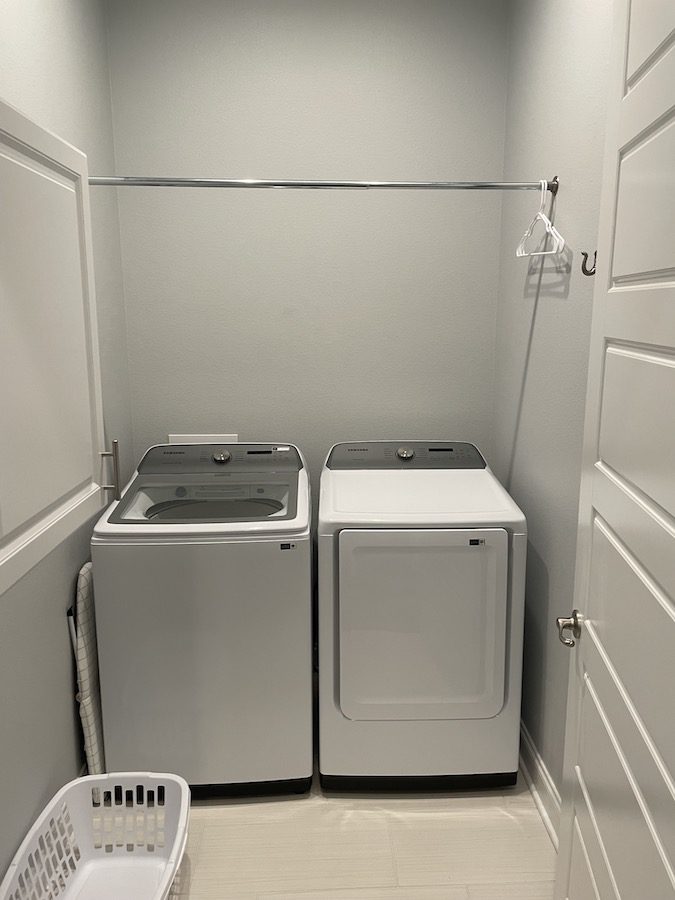
Here’s a breakdown of what influences the price:
1. Cost of the Whole-House Surge Protector:
- The price of a whole house surge protector itself can range from $100 to $300 depending on the brand, quality, and features (e.g., the level of protection, warranty, and additional features like indicator lights).
2. Electrician’s Labor Costs:
- Electricians typically charge either an hourly rate or a flat fee for this type of work. The labor cost alone can range from $100 to $400.
- Hourly Rates: On average, electricians charge between $50 to $100 per hour, and the installation of a whole house surge protector usually takes between 1 to 2 hours, depending on the complexity of your electrical panel and home wiring.
- Flat Fee: Some electricians may offer a flat fee for installing a surge protector, often between $150 to $300.
3. Location:
- Geographical location plays a big role in pricing. Electricians in urban areas or regions with a higher cost of living may charge more than those in rural areas.
4. Condition of Electrical Panel:
- If your electrical panel requires upgrades or modifications (e.g., older panels that lack available space for the surge protector), this can add to the cost.
- In cases where a sub-panel or other changes are needed, you could expect to pay more.
5. Additional Services:
- Some electricians may offer extra protection features, such as installing surge protectors on individual outlets for added security (though this would increase the overall cost).
Summary of Average Costs:
- Whole-house Surge Protector: $100 to $300
- Labor (Electrician): $100 to $400
- Total Average Cost: $300 to $700
Keep in mind that getting a few quotes from licensed electricians in your area is a good idea to ensure you’re getting a fair price. Some electricians may offer a bundled rate for both the surge protector and the installation.
State Farm gives a discount
Some insurance companies give a discount on home owners insurance for installing a whole-house surge protector. This may be enough over a few years to cover the cost of the unit and installation. Check with your insurance carrier about what is required e.g. receipts to receive their discount.
Manufacturers of whole-house surge protectors
Check out their websites for more information. Installers will have their favorite brands with easy access to products.
Siemens – Visit the Siemens website for customer support and contact details: Siemens USA.
Leviton – For Leviton’s customer service and contact options, visit Leviton’s Contact Page.
Eaton – Find Eaton’s customer support information on their official site: Eaton Support.
Schneider Electric (Square D) – You can get in touch with Schneider Electric through their support page:
Check out our articles about similar topics.
Please leave comments and let us know if this article is helpful.
Discover more from RetireCoast.com
Subscribe to get the latest posts sent to your email.

